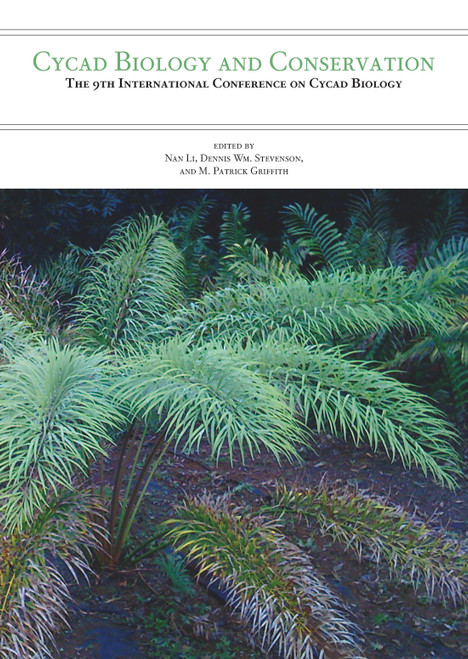This purchase only includes chapter 22 of this title.
Abstract
The living and historical ground collection at Montgomery Botanical Center (MBC) was examined in order to evaluate cumulative sex ratios for individual genera and the collection as a whole. The analysis, which included 4,932 individual cycads comprising all 10 genera, uncovered a significant male bias (P < 0.5) in the collection as a whole as well as in the genera Bowenia and Cycas. This bias is presumed to be the result of male plants producing strobili at an earlier age than female plants in a collection that still has many juvenile plants. When the collection as a whole was examined including only accessions in which 100% of individuals had produced strobili, a male-biased sex ratio was observed in Cycas, Lepidozamia, and the collection as a whole, while a female-biased sex ratio was observed in Stangeria eriopus. The biased sex ratios in Stangeria and Lepidozamia are likely the result of low sample sizes, but in both analyses, the genus Cycas was strongly male biased. The earlier production of strobili by male plants compared with female plants was illustrated with a cohort of 35 seed-grown Zamia furfuracea. The effect of time of year in observed sex ratios was illustrated by examining the monthly sex ratios of a cohort of 28 Zamia nesophila plants with a 1:1 genotypic sex ratio for a year. The observed sex ratio varied widely and only reflected the genotypic sex ratio for one month. The above observations suggest that the observed sex ratios may vary widely in wild populations and ex situ collections depending on the time of year when the observations are made, and will often be male biased, as pollen strobili are produced more frequently and at an earlier age than ovulate strobili. Based on observations of a large number of plants at Montgomery Botanical Center, we believe that the true genotypic sex ratios of most cycad genera are likely close to 1:1 and that the true sex ratios of wild populations and ex situ collections of cycads can only be approximated via long-term monitoring. The male biased sex ratio found in the genus Cycas merits further investigation in other living collections and wild populations in order to ascertain whether this phenomenon is specific to MBCs living collection, or widespread within the genus Cycas.
Keywords: Cycadaceae, Zamiaceae, genotypic sex ratio, phenotypic sex ratio, observed sex ratio, cone, strobilus, phenology











